 | « Back to article | Print this article |
The Underwater Photography Guide has announced the winners of their 8th annual Ocean Art Underwater Photography Competition: a selection that runs the gamut between beautiful, eye popping and, in the case of the Conservation category winner, tragic and unnerving.
This year’s contest attracted “thousands” of entries from 78 countries across the world.
Greg Lecoeur took Best in Show with his image of a crabeater seal in Antarctica.
Take a look at the winners.
(Click on the image for full-screen resolution)
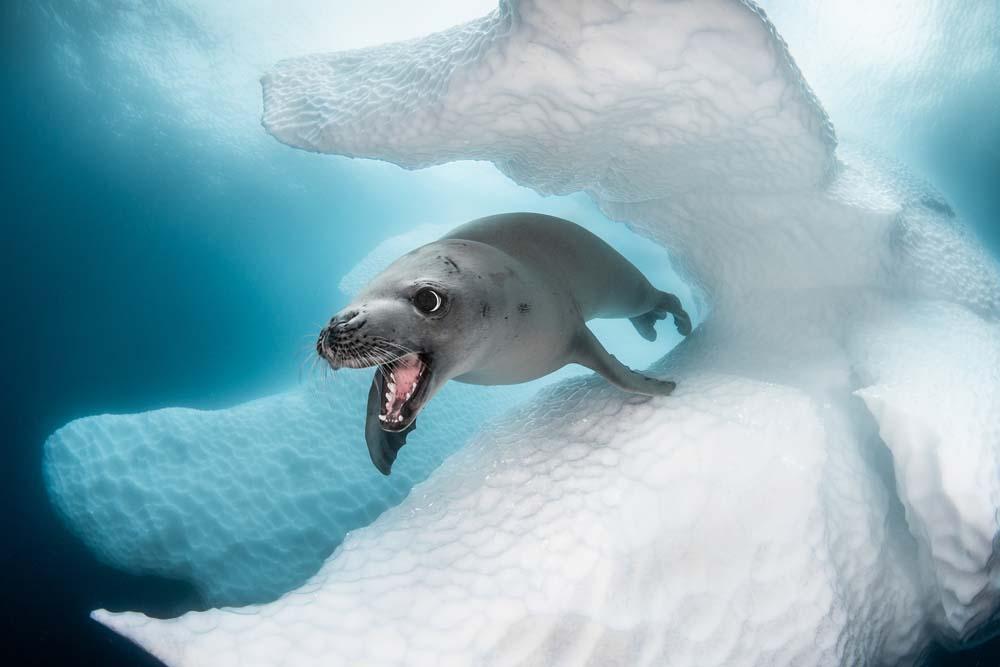
During an expedition on a small sailboat, we explored the Antarctica Peninsula by diving below the surface. Although the conditions were extreme with a temperature of -1°C, we documented extraordinary marine fauna at home in a fragile ecosystem, such as on this image: crabeater seal. We also saw leopard seals, gentoo penguins, Antarctica fur seals, and weddell seals. All these marine animals are affected by global warming with the melting of the ice. Despite the name, Crabeater Seals don’t eat Crabs. Photograph: Greg Lecoeur/Ocean Art
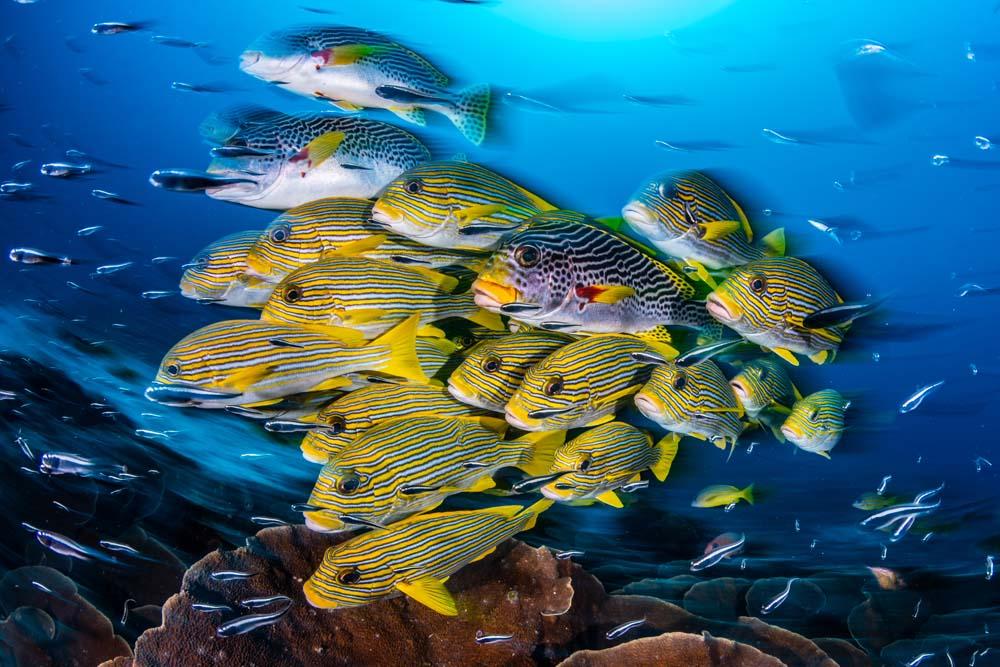
We were diving Saundereck Jetty when I came across this school of Yellow Ribbon Sweetlips at approximately 25 m, over a patch of hard corals. What I found really beautiful about the scene was the cloud of Convict Blennies swarming all over the reef. Ribbon Sweetlips (Plectorhinchus polytaenia) are nocturnal hunters but during the day they form dense schools on the reefs of Raja Ampat, sheltering from the strong current. Photograph: Nicholas More/Ocean Art
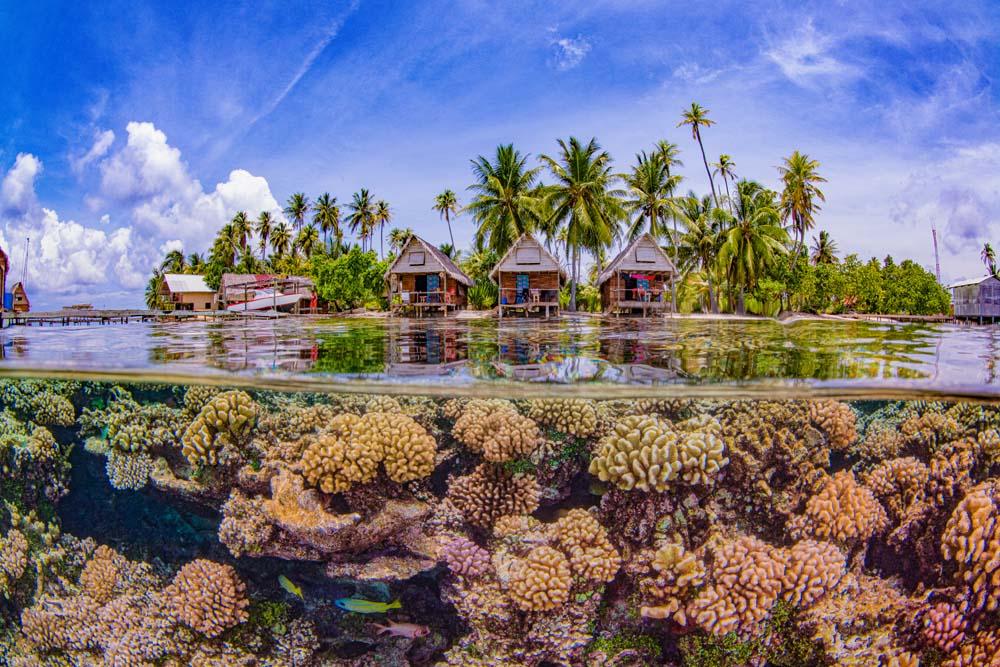
Tomakohua pass, which is originally famous for huge shark wall, was a real paradise for me. After seeing the sharks, I was just ascending with my buddy at this site. Then, I saw this paradise on the surface. I tried split shots but it was not really easy for the strong wave. Finally I got this picture after second dive at this site which was done only for this shot. Photograph: Taeyup Kim/Ocean Art

This photo was taken in Puerto Galera, in the Philippines. During a daytime dive I saw this seahorse, and I decided to put the flash behind him with the "Snoot", creating a backlight. Photograph:Stephano Cerbai/Ocean Art
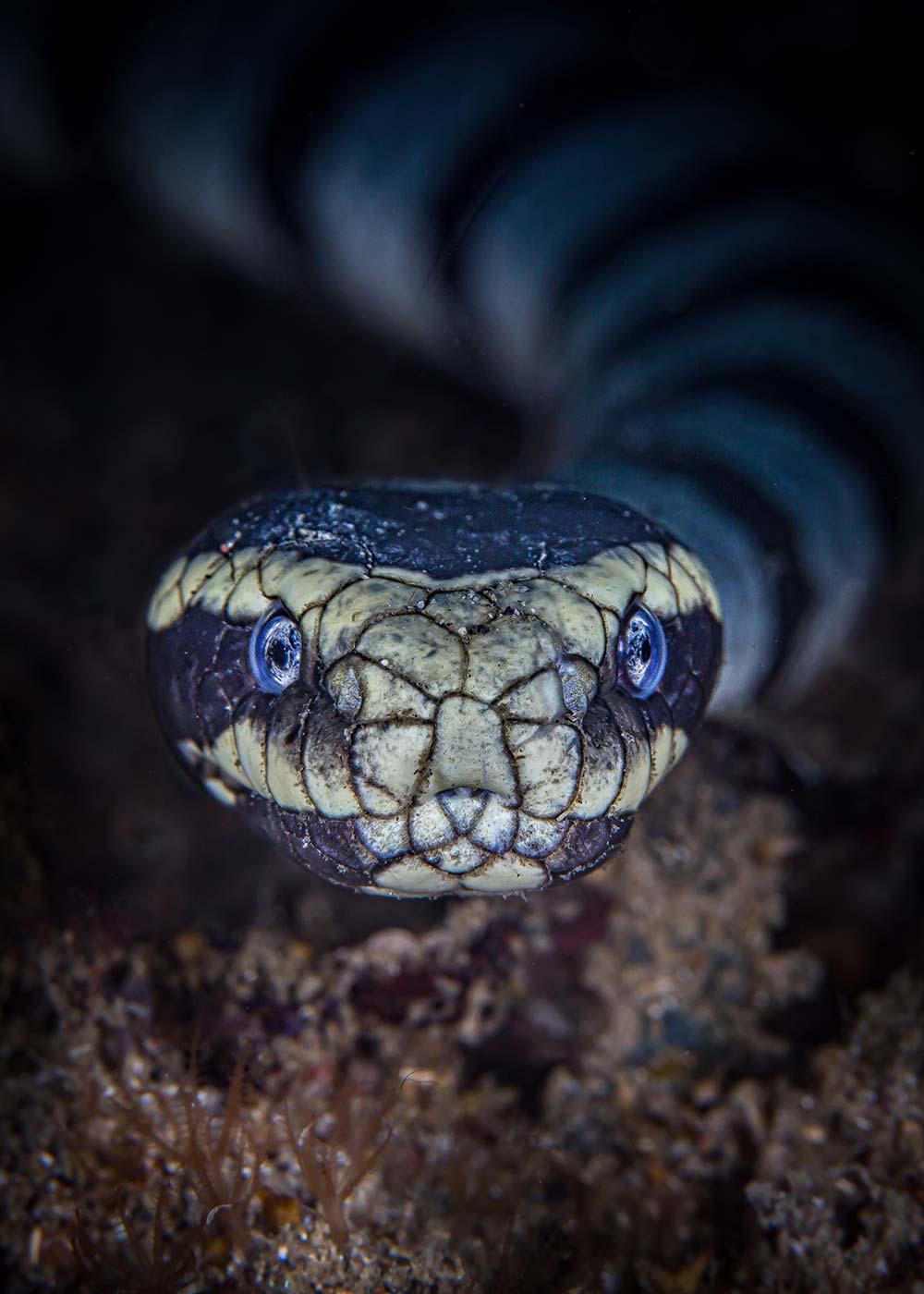
Unexpectedly we came across this Banded Sea Snake taking a nap on the sea bed at around 20 metres deep. With the maxim in mind that "hesitation kills the shot" I headed way out in front of it so that it could see me approaching and not be spooked. I slowly got nearer and nearer and ended up around 1 metre in front of it, flat on the sandy bottom, took around 6 shots (heart beating rapidly) and then left it where it was (seemed like a wise thing to do). Photograph: Dave Johnson/Ocean Art
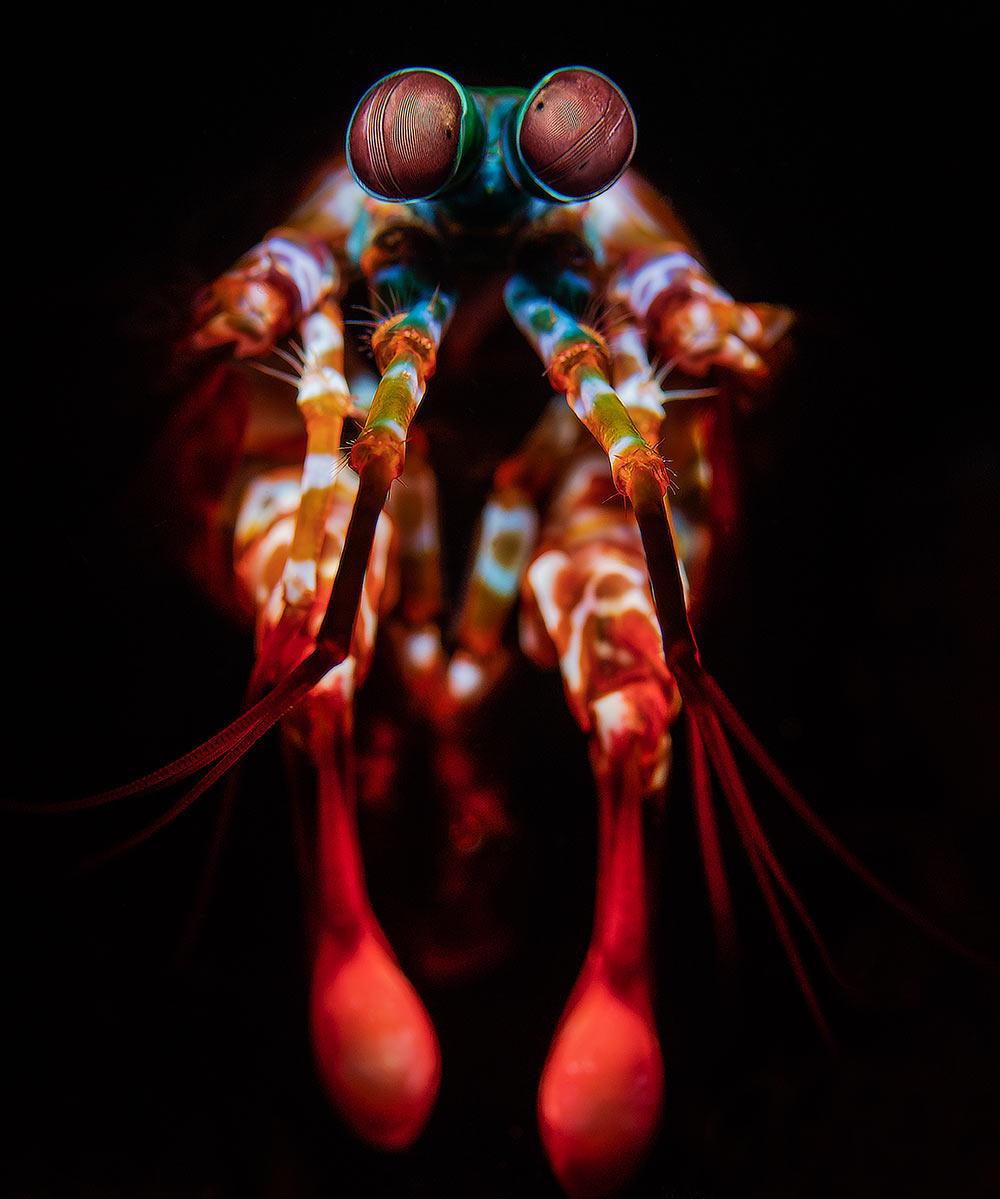
The Peacock Mantis Shrimp was seen in Anilao and normally resides inside the small cave. Besides the strong claws, mantis shrimp also famous about its eyes which are believed to be the most complex visual system in the animal kingdom. It contains 16 photoreceptors which can see UV, visible light and even polarised light. In addition, each eye can be move independently by the stalks, this make the most challenge part of this photo by catching the moment of this beautiful creature looking at the camera with eyes contact. Photograph: Yat Wai So/Ocean Art
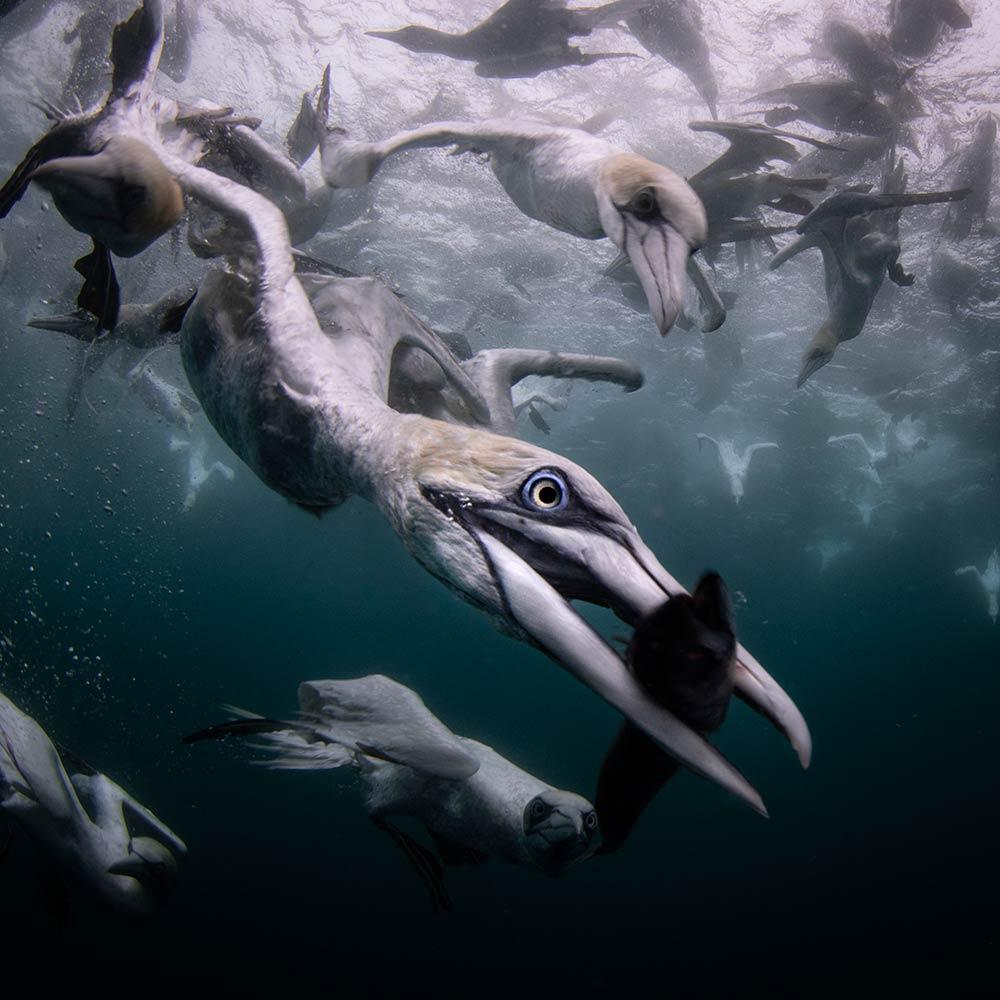
Underwater at only about 6 m depth I suddenly heard the sound of jungle drums. Surprised and confused I first looked up towards the boat to see if they were banging for me to go up but they were not. I was then thrilled to realise that the sound was from Gannet after Gannet diving to catch fish. Photograph: Johan Sundeliin/Ocean Art
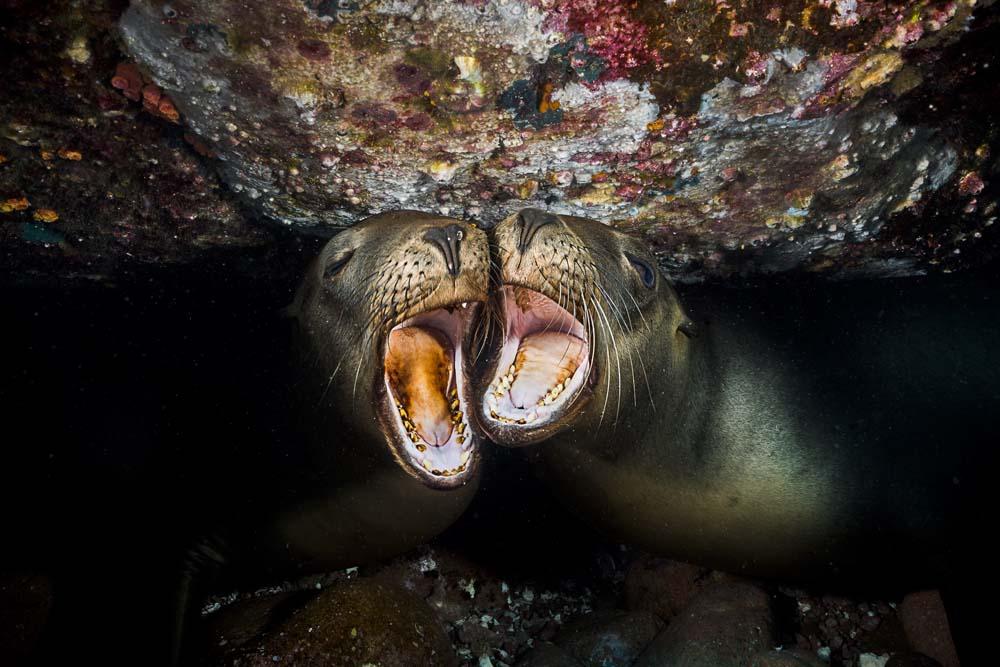
Juvenile sea lions (Zalophus californianus) play under a shallow rocky ledge at Islote Los Lobos, La Paz, Mexico. While they seem to be singing in perfect harmony, I do not remember listening anything! Photograph: Pedro Carillo Montero
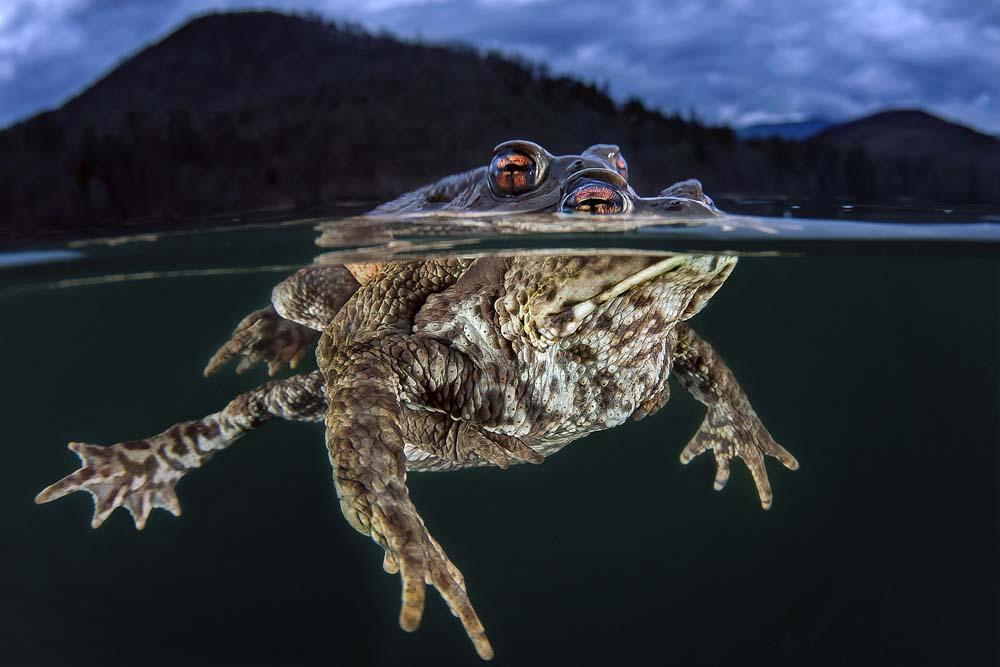
In spring this lake is filled with mating toads. I took this over-under shot with the intention of representing the pair of toads in their natural environment. Photograph: Claudio Zori/Ocean Art
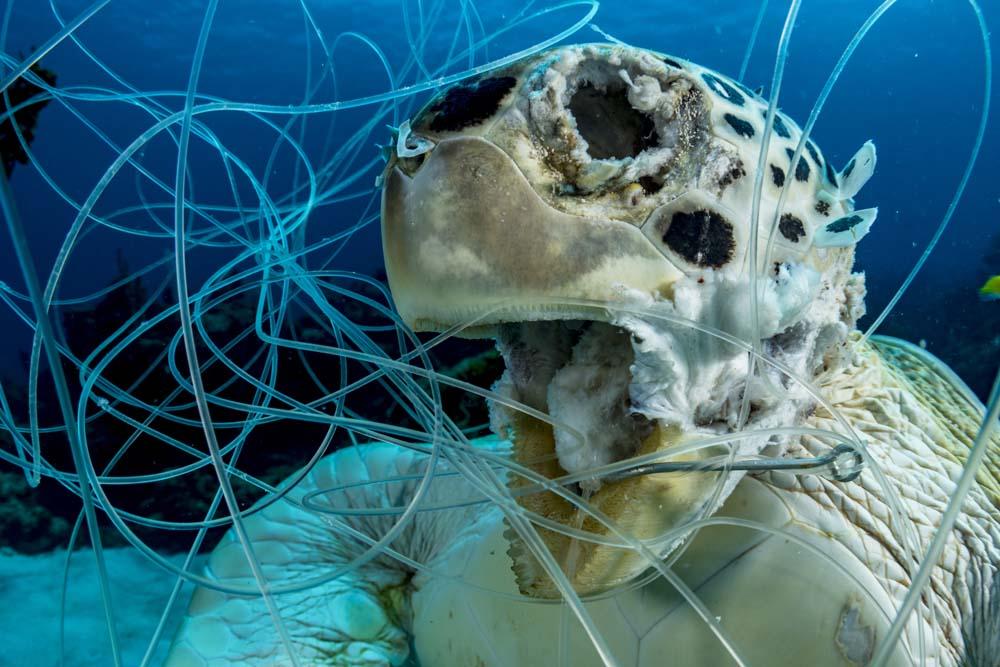
My dive buddy came to me in tears talking about a poor turtle that was already long dead, tangled in fishing line. She didn't have time to remove the line so she told me where it was and I went back. I didn't want any scavengers to also become entangled. I took my camera because images like this can become warnings for the future. We don't want any other turtles, or any creatures, to become doomed to the same unfortunate fate: drowned and wasted thanks to our negligence. Photograph: Shane Gross/Ocean Art
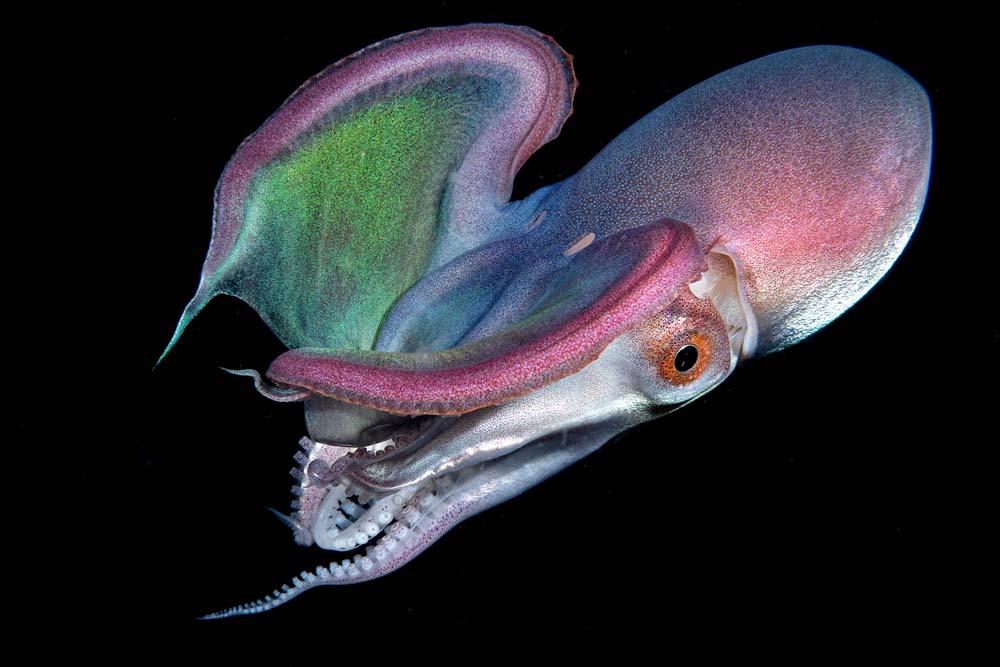
This image represents a Blanket Octopus (Tremoctopus spp.) pictured during a night, blackwater dive in Anilao (Philippines); blanket octopuses are very elusive and quite hard to find; When threatened, the blanket octopus extends its fleshy curtains to look like a disco icon. Photograph: Paolo Bausani/Ocean Art
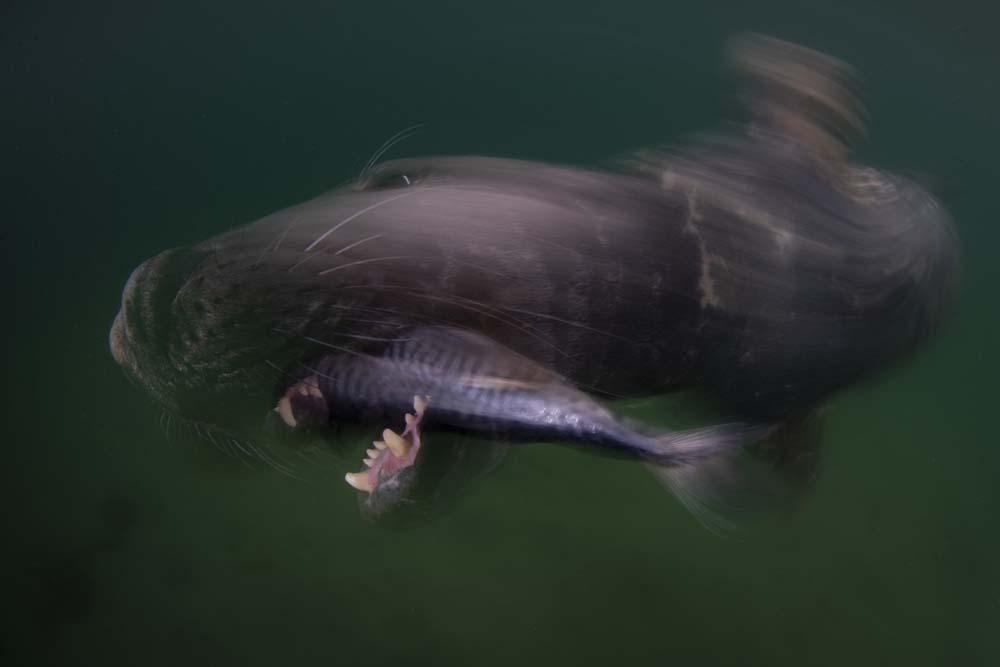
I had planned to go out with boat on Shetland Islands to shoot Gannets but the sea was too rough outside the bird cliff. Improvising we managed to instead find a couple of large Grey seals in an area protected from the waves. I decided to use a long shutter speed to not only show the speed of the seal but also to emphasise the face. Then a lot of patience and luck made this picture possible. Photograph: Johan Sundelin/Ocean Art
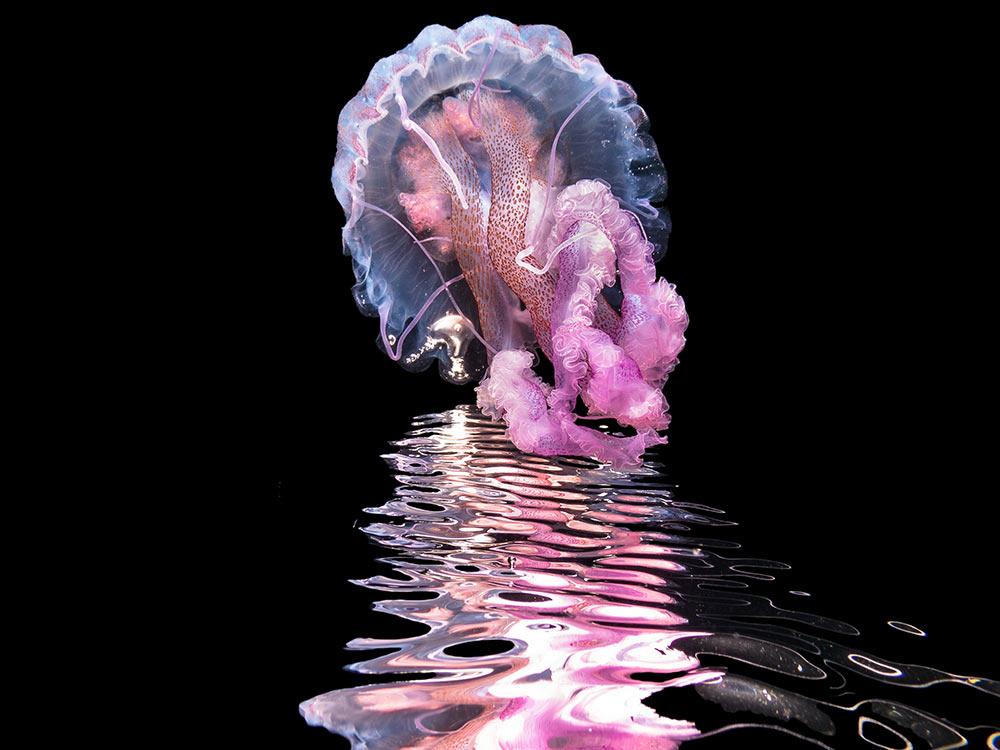
It took me lots of attempts to capture the reflection of a beautiful Pelagia Noctiluca underwater. While snorkeling, I was able to move on the surface on time and get the shot which looks like a furrow of an underwater torpedo. The magnificent jellyfish is dreaded by swimmers because of its painful sting. Photograph: Fabien Martinazzo/Ocean Art
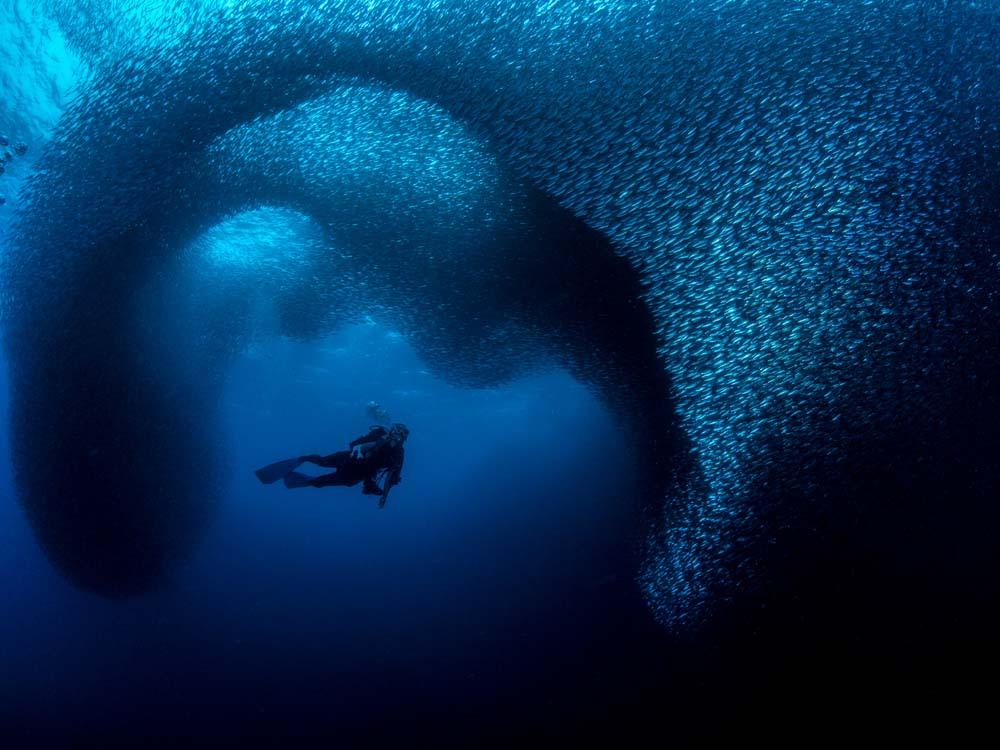
A single sardine is small, but a school of sardines is tremendous -- especially when the water is clear and blue. To find the right ocean conditions, we surveyed several dive shops, and asked if they could provide early morning diving. In the afternoon, diving in a sea of sardine poop which can lower the visibility a lot. Photograph: George Kuo-Wei Kao/Ocean Art
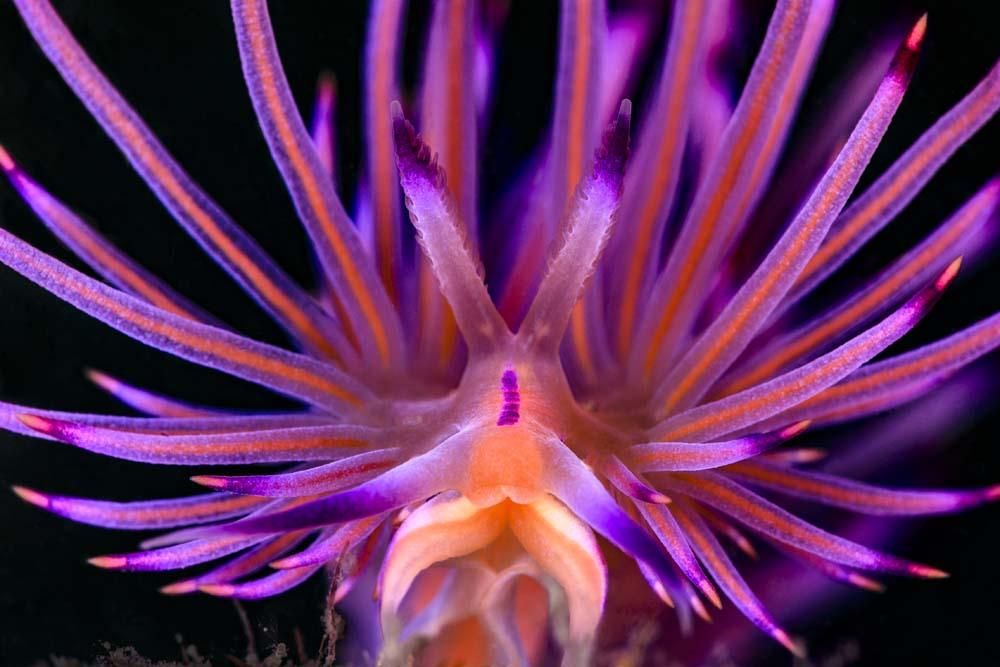
The Mooloolah River is a rich treasure trove of nudibranchs. Over 350 species have been found along the 600m river bank. The real challenge is to get a photograph that depicts the stunning form of these tiny creatures. I fell in love with flabellina lotus in particular. I returned to the river every weekend for four months to try to achieve an image where the flabellina's vivid purple cerata popped against a jet black background. Photograph: Jenny Stock/Ocean Art
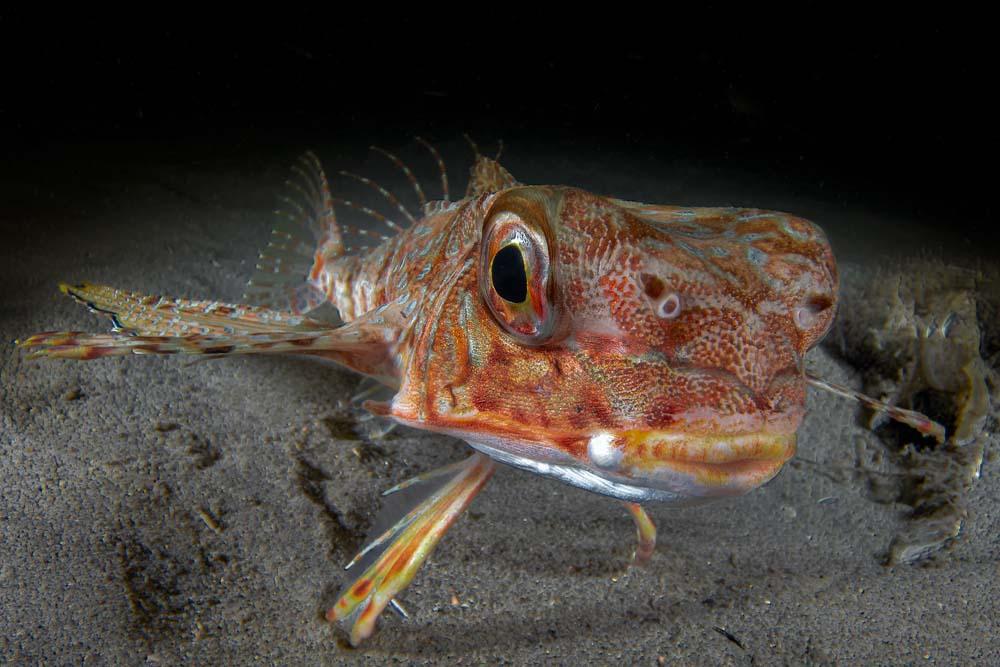
During a fantastic night dive we had the possibility to meet this wonderful fish when during the night it's quite easy to have closer and closer. Photograph: Davide Lombroso/Ocean Art

A loggerhead sea turtle swims entangled in abandoned fishing gear, off the coast of El Hierrop, Canary Islands. The loggerhead is classed as a ‘vulnerable’ species globally by the International Union for Conservation of Nature, but the northeast Atlantic subpopulation is listed as ‘endangered’. Entrapment in nets intended for other species, and in gear left abandoned by fishing boats is the prime threat to marine turtles. Photograph: Francis Perez/Ocean Art



